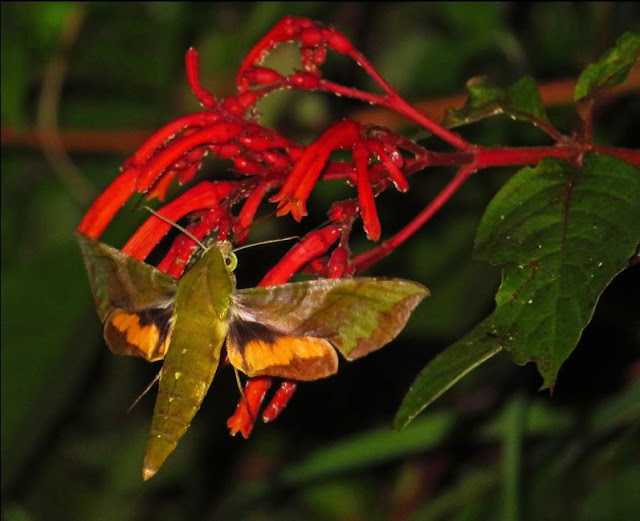National Moth Week: Pluto Sphinx Moth (Xylophanes pluto)
 |
| Pluto Sphinx Moth (Xylophanes pluto) nectaring on one of its host plants, Florida Firebush (Hamelia patens var. patens). Photo by iNaturalist user Al Tuttle, CC BY-NC 4.0 |
It’s a standout at every stage of its lifecycle, too. Have you ever been gardening and been startled to see two buggy eyes staring at you from the leaves? It might’ve been a Pluto Sphinx moth caterpillar, which has a great defense mechanism in the form of two large fake eyes that make it appear much more formidable than it actually is.
Moths like the Pluto Sphinx deserve credit for being important pollinators for many wild and cultivated plants, including wild verbena.
 |
| Pluto Sphinx Moth caterpillar (Xylophanes pluto) in Costa Rica. Photo by iNaturalist user Paola Carrera, CC BY-NC 4.0 |
These pretty olive-drab moths typically have wingspans of up to 2.5 inches and can be found from South America up to southern Texas and southern Florida, as well as in the West Indies. Larval host plants include the Florida natives West Indian Milkberry (Chiococca alba) and Florida Firebush (Hamelia patens var. patens), according to Butterflies and Moths of North America.
To help document these often-overlooked native plant pollinators, share your moth photos in the iNaturalist National Moth Week citizen science project. For more information, check out National Moth Week.
By Laura Bennett-Kimble, edited by Valerie Anderson



Comments